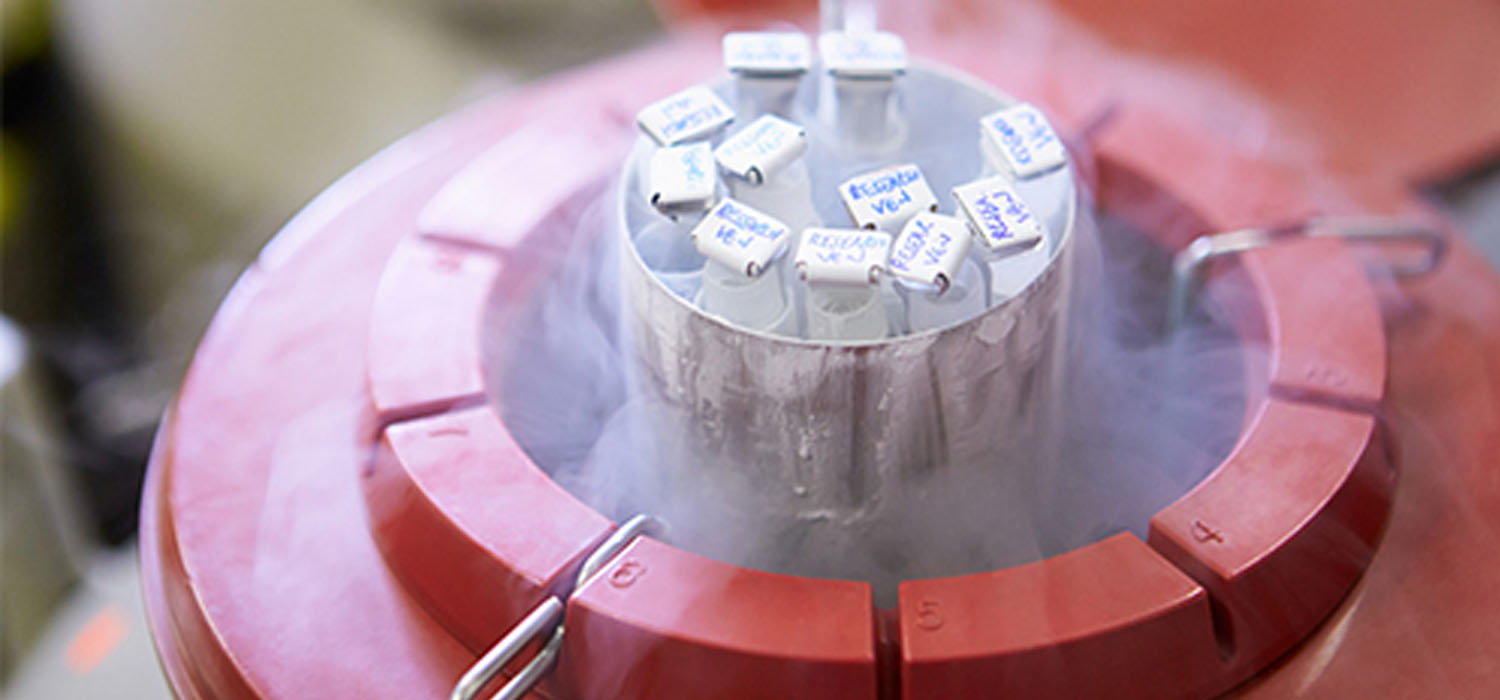Semen Banking
Semen banking is an integral part of reproductive medicine practice and involves storing ejaculated sperms at sub-zero temperatures. However, there is no internationally accepted gold-standard method that induces least damage to the sperms.
Media composition
Conventional cryo-preservation medium includes
- Penetrating cryoprotectant (Glycerol)
- Non penetration cryoprotectant (sucrose)
- Semen extender (egg yolk/serum albumin/ lipoprotein)
- Buffer system (HEPES or citrate)
- Osmolytes (Glycine)
There have been efforts to eliminate egg yolk as the composition may vary with the hen’s health , presence of endotoxins or avian infection. Electrolyte free medium has been successfully used for short term storage.
Types of sample
1) Cryopreservation of neat ejaculate
Liquified semen is mixed with semen freezing medium. The advantages include retaining the antioxidants in the semen rich plasma which can reduce the freeze-thaw damage. Also, the decapacitation factors present in seminal plasma prevent premature capacitation and acrosomal reaction. The disadvantage is that the dead and abnormal sperms might produce reactive oxidative species which reduces the competence of the sperms.
2) Cryopreservation of sorted sperms
This is to overcome the disadvantages of freezing a neat ejaculate. Swim up and density gradient methods allow for extraction of motile sperms and elimination of apoptotic sperms and WBCs. The disadvantage is the loss of antioxidants and decapacitation factors.
Storage devices
High security plastic straws and cryovials with screw caps are the most popular devices. Plastic straws must be sealed after the semen sample is loaded. This helps to keep the samples secure and prevent contact with liquid nitrogen. Sealing is done with non-toxic adhesive materials like clay, poly vinyl plug or heat sealing. The sealing device has to labelled correctly.
Cooling and storage
Storage devices containing semen samples are usually gradually cooled instead of plunging into liquid nitrogen. Cryoprotectant free technique of vitrification does not cause osmotic shock. However, semen vitrification has not found any advantage over conventional freezing because of high concentration of cryopreservants and direct contact with liquid nitrogen.
Thawing
Thawing temperature is critical for obtaining a good post-thaw survival of sperms. The straw or vial is kept in water bath at 370 C and rapidly thawed. The sample must be washed after complete thawing in order to remove the cryoprotectants and remove their toxicity.
Documentation
This is an important aspect of semen freezing and must include date of freezing, number of samples stored form a patient ( donor/ infertile man/ man opting for fertility preservation), date of expiry of legal agreement between the bank and party etc. There should also be a signed document specifying who has the right over the husband’s semen in the event of his death.
Indication for semen cryopreservation
- Donor semen sample
- Cryopreservation for convenience- The man may not be able to give the sample on the day of IUI/IVF/ICSI due to personal or social reasons. Hence prior storing of the semen sample ensures that the cycle is not cancelled.
- Pooling of ejaculates from male having severe oligoasthenoteratozoospermia (OATZ)
- Pre-operation: Prior to surgeries like varicocele ligation, vasectomy, orchidectomy; intra-op cryopreservation for non- constructable OA like CBAVD.
- Cryopreservation before cancer therapy
- Cryopreservation before treatment of non-cancerous conditions like treating auto-immune disorders, ulcerative colitis, kidney diseases, heart transplant etc.
- Men working in military, in nuclear reactor, with pesticides and heavy metals.
Post-mortem sperm retrieval
This needs written consent from the wife. She must also consent for quarantining the sample for six months. The couple must have been planning a pregnancy before the husbands death. The death must have been sudden and not due to diseases affecting spermatogenesis or due to a transmissible infective disease. Sperms must be retrieved within 24 hours after death.
Functional competence of sperms after cryopreservation
At least 50% of the sperms are damaged/ destroyed after freeze-thaw. The damage could be to the chemical process or physical or due to ROS.
Semen freezing is hence an integral part of ART and has specific indications and rigorous procedures. It needs techniques which can help to reduce the freeze-thaw damage. Adding antioxidants like catalase, superoxide dismutase, vitamin E and C, trace elements like copper, selenium, and zinc to the cryopreserving media my be beneficial for the functioning of the post-thaw samples.
For more info, Visit : www.medlineacademics.com
